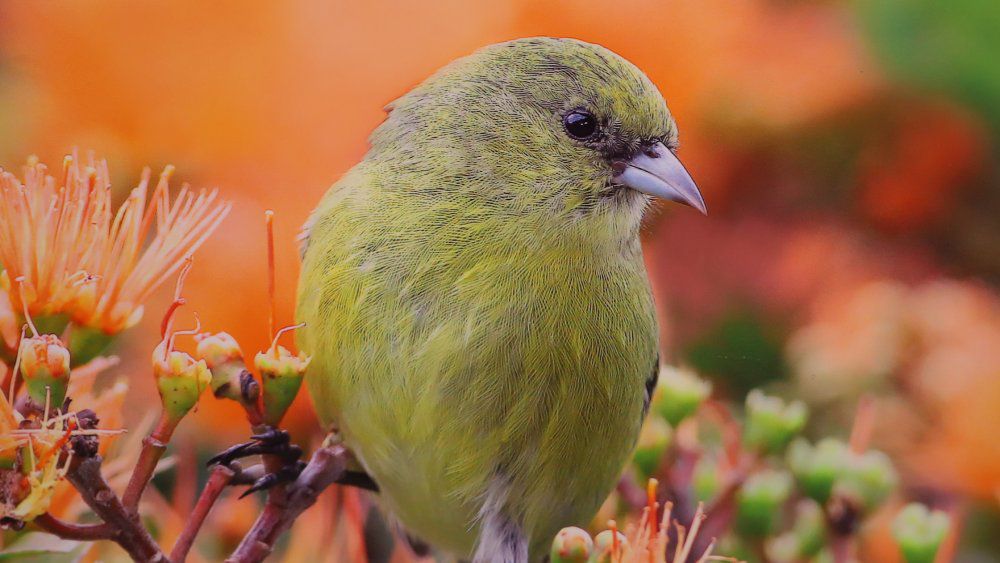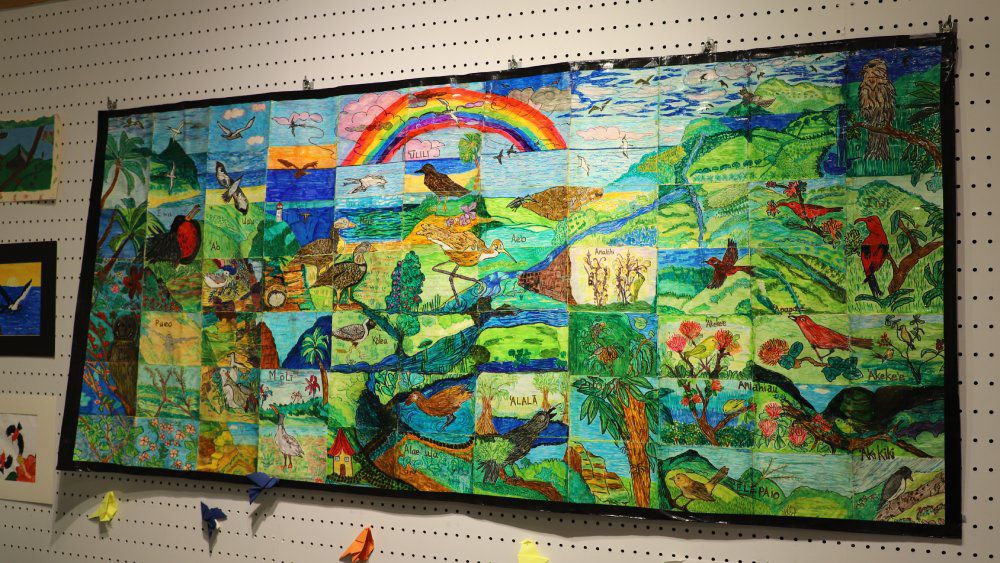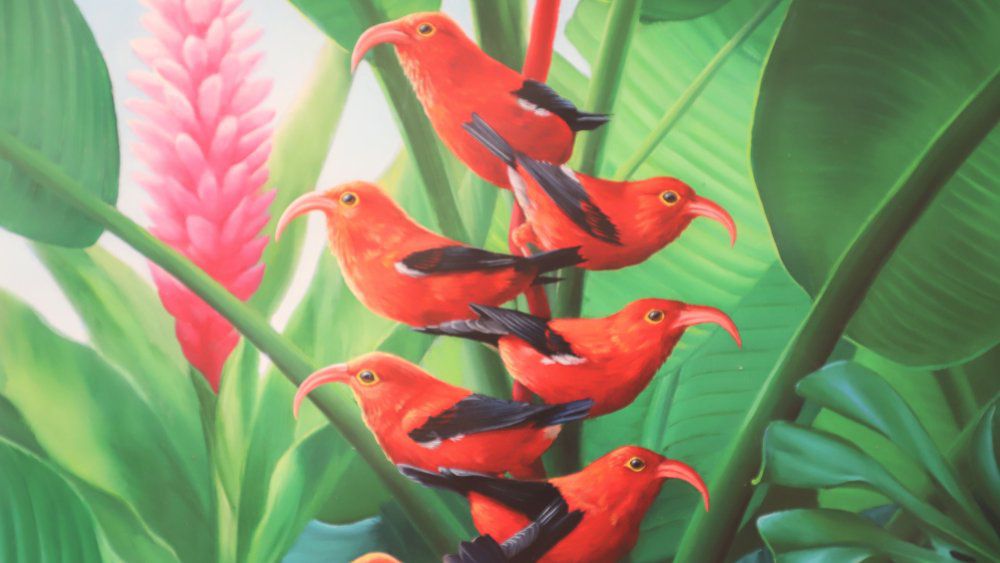“Wings and Woodlands: A Tribute to Native Birds and Forests” is an art exhibit celebrating Hawaii’s jewels of the forests.
Six of the eight species of forest birds that call Kauai home can only be found on the island — the ʻakekeʻe, ʻiʻiwi, puaiohi, ʻapapane, ʻanianiau, Kauaʻi ʻelepaio, Kauaʻi ʻamakihi and the ʻakikiki. Four of them are endangered or threatened.
As the earth’s temperature continues to rise due to climate change, mosquitoes carrying avian malaria are climbing higher in elevation into the domain of these native birds. Because of it, honeycreepers are on the verge of extinction — and in the case of the ʻakikiki, are already “functionally extinct.”
The free exhibit features paintings and photographs contributed by artists from Hawaii, New York and California, as well as artwork created by students. Their work will be on display through Nov. 8 at the Kauai Society of Artists Gallery at Kukui Grove Center.
The exhibit also includes shows of a new documentary on Hawaiian forest birds in addition to workshops on painting, native plants and learning mele.
“We are closing out the Year of the Forest Birds by hosting this wonderful art exhibit. First and foremost, we are trying to celebrate our birds. We are trying to celebrate their beauty and when you look at all the beautiful art pieces here, you can see that they are inspiring,” said Dr. Julia Diegmann of the Kauai Forest Bird Recovery Project (KFBRP) at the Friday night opening of the exhibit.

As a former field coordinator for KFBRP, Justin Hite says he has spent nearly 1,000 nights over an eight-year period camping in the birds’ habitat. He is currently a planner with the DLNR Division of Forestry and Wildlife.
“I watched the forest empty out of ʻakikiki,” said Hite in a release. “I watched them all disappear. When I first got here, the valley (where Pakele lives) was fully occupied with “akikiki everywhere.” Pakele is one of two ʻakikiki remaining in the wild. The second bird is a juvenile that “just sort of magically showed up,” said Hite.
“Pakele, who, while everybody else had disappeared around her, she just maintained and stayed on her territory and has not disappeared,” Hite said. “I just really want to acknowledge the two of them as being the ones that are going to move forward with this.”
Especially appreciative of the artists, young and old, Diegmann said, “I want people to come here and to enjoy the beautiful art and to learn about the different species that we have here on Kauai.”
The efforts to control mosquitoes are currently focused on Kauai and Maui. Once avian malaria is under control, it’s hoped that the many birds that have been caught and moved into bird conservation centers may be released back into the forests, singing their songs where they belong.




